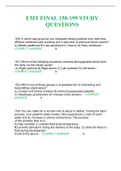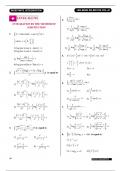Samenvatting
Summery/Samenvatting Psychofarmacologie
In deze samenvatting komt alles aan bod voor het examen Psychofarmacologie Universiteit Utrecht, Psychologie. Aan het einde van de samenvatting is er een overzicht van alle drugs/stoffen waarover in het boek wordt gesproken, en een korte samenvatting van het werkingsmechanisme. Deze samenvatting is...
[Meer zien]














